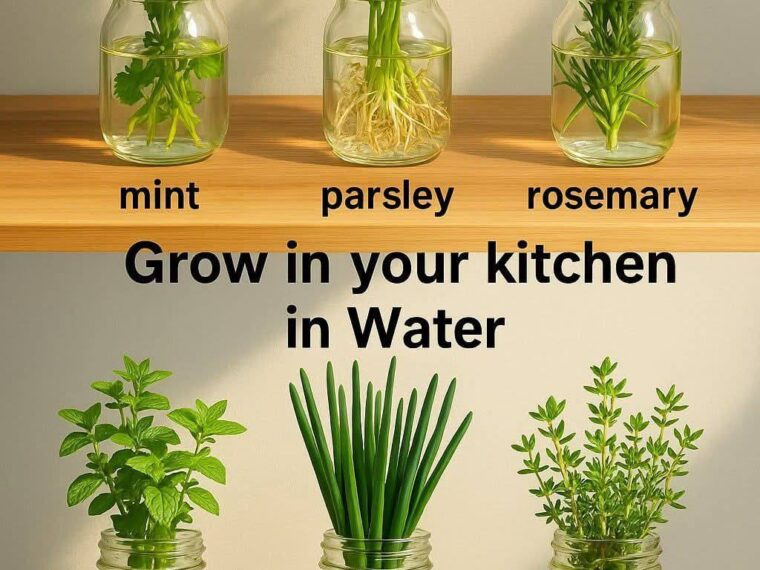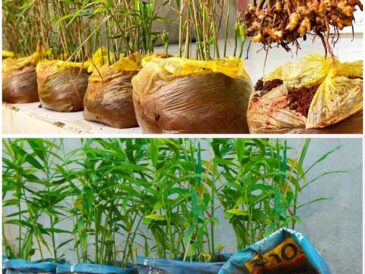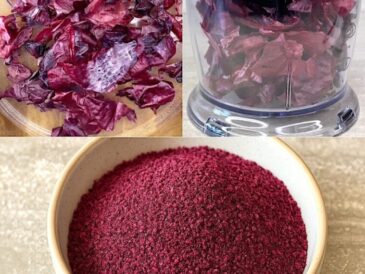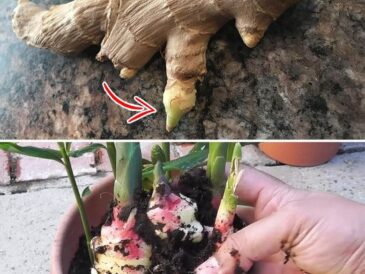5. Water Poppy (Hydrocleys nymphoides) – A Floating Sunshine
Description
Water poppies are charming floating plants with bright yellow, poppy-like flowers and heart-shaped leaves. They are easy to grow and bloom profusely during warm months, making them a cheerful addition to any pond or water container.
Growing Conditions
- Water Depth: 6–12 inches.
- Sunlight: Full sun to part shade.
- Temperature: Warm weather bloomers.
Maintenance Tips
- Remove old or damaged leaves regularly.
- Thin out excess growth to avoid overcrowding.
- Can be overwintered indoors in colder regions.
Benefits
- Adds color and texture to ponds.
- Attracts pollinators.
- Provides shade and shelter for aquatic life.
6. Lucky Bamboo (Dracaena sanderiana) – Green Elegance Indoors
Description
Despite its name, lucky bamboo is not a bamboo but a type of dracaena. It’s often seen growing in water-filled vases, popular in Feng Shui for bringing luck and prosperity.
Its upright stalks and lance-shaped green leaves create a clean and calming appearance perfect for modern interiors.
Growing Conditions
- Water Level: Keep roots submerged, but not the whole stalk.
- Sunlight: Indirect light; avoid direct sun.
- Temperature: Room temperature (65–90°F or 18–32°C).
Maintenance Tips
- Change water every 1–2 weeks.
- Use filtered or distilled water to avoid chlorine buildup.
- Clean roots occasionally.
Benefits
- Compact and decorative.
- Low-maintenance.
- Believed to attract good energy.
7. Papyrus (Cyperus papyrus) – Ancient and Architectural
Description
Papyrus is a striking aquatic plant once used by ancient Egyptians to make paper. Its tall, slender stems are topped with a crown of fine grassy tufts that sway in the breeze, adding drama and elegance to water gardens.
Growing Conditions
- Water Depth: 2–10 inches above the roots.
- Sunlight: Full sun to partial shade.
- Placement: Along pond edges or in large water containers.
Maintenance Tips
- Trim back in winter or during dormancy.
- Can grow in or beside water.
- Use a wide pot or shallow pond feature.
Benefits
- Tall and dramatic presence.
- Excellent for privacy or screening.
- Attracts beneficial insects.
Why Choose Water-Grown Plants?
1. No Soil, No Mess
Forget about repotting, dirt spills, and fungus gnats. Water-grown plants offer a cleaner, more organized alternative to traditional potted plants.
2. Minimal Maintenance
These plants typically require less frequent care, as they draw nutrients directly from the water. Just keep the water clean and occasionally add fertilizer.
3. Eco-Friendly
Some aquatic plants filter toxins and absorb nitrates, improving water quality and supporting local ecosystems.
4. Versatile and Stylish
From modern interiors to traditional garden ponds, water-grown plants adapt easily. A single stem in a glass vase can be as impactful as an entire floating bloom in a pond.
5. Educational and Therapeutic
Watching roots grow and flowers bloom in clear containers is not only educational but also soothing and meditative.
Tips for Growing Plants in Water
Whether you’re growing plants in a vase on your desk or maintaining a full pond, here are essential care tips:
- Use clean water: Prefer distilled, rainwater, or filtered water, especially for indoor use.
- Change water regularly: Every 1–2 weeks to prevent algae and stagnation.
- Provide adequate light: Most aquatic plants need indirect or direct sunlight.
- Trim dead foliage: To keep the plant healthy and water clean.
- Add aquatic fertilizer: Use diluted liquid fertilizer occasionally to boost growth.
Conclusion
These seven water-grown plants are more than just decorative—they’re functional, fascinating, and full of personality. Whether you’re new to gardening or a seasoned green thumb, cultivating plants in water is an incredibly rewarding experience.
From the sacred lotus rising above murky waters to the compact and charming lucky bamboo adorning your windowsill, each of these plants brings a unique touch of nature’s beauty into your life—without ever needing a handful of soil.
Why not start your own soil-free indoor garden today? All it takes is a bit of water and a bit of wonder.




